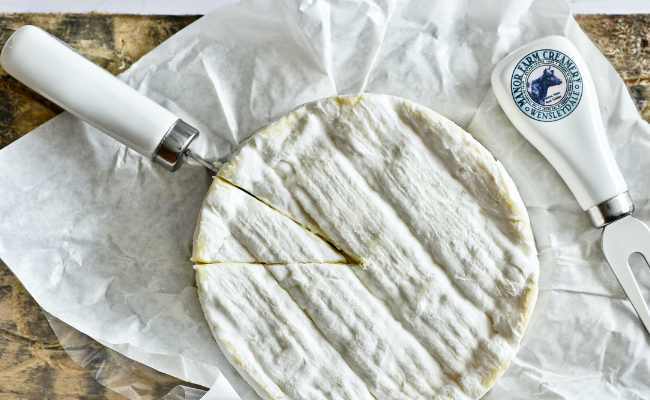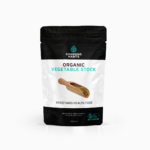A growing number of people are realising that they feel better without dairy. Whether this is because we are more aware of the symptoms of food intolerance now, or that our immune systems are becoming less resilient, it’s hard to tell.
For most of my life I suffered many health problems, and eliminating dairy years ago was one thing that really took my health to a new level. Since healing my gut, I seem to tolerate a small amount of raw, mostly European (see below) goats cheese now and then. When it comes to cows dairy, however, I know I am better off without it – my immune system improves, as does my skin, and I am less congested.
Dairy intolerance is a very individual problem, yet it is estimated that around 60% of the human population has a reduced ability to digest lactose in milk.
How Dairy has Changed
Dairy has been consumed for many thousands of years as a staple in many cultures, but the preparation of dairy was very different to what it is today. The dairy was fresh from the animal source and enjoyed soon after, or, to make it last longer, it would be fermented into a raw yogurt, kefir or cheese, or made into butter.
A large reason I avoid dairy is because it is difficult to find high quality dairy that is prepared traditionally. European cultures prepare cheeses with raw milk, and therefore it remains a probiotic-rich, fermented food and many of its essential enzymes and nutrients remain intact. In Australia, preparing cheese in this way is illegal – this baffles as, previous to this law, we were drinking raw milk and eating raw cheese for thousands of years!
The processing now applied to dairy products results in a highly inflammatory food that immunocompromised individuals really struggle with.
Moreover, let’s think about what we feed and how we raise the animals that produce dairy; their diet consists mostly of genetically modified corn, wheat and soy, they often will not see the sun and are administered medication, like antibiotics, to keep them alive.
Symptoms of a Dairy Intolerance
These following symptoms can be present in those with a dairy intolerance:
- Diarrohea
- Gas
- Constipation
- Abdominal pain
- Unexplained joint and/or muscle pain
- Headaches
- Sinus infections or sinusitis
- Hay fever
- Post nasal drip (when you feel mucous drip from your nose down the back of your throat)
- Reoccurring ear infections
- Reoccurring chest infections
- Asthma
- A foggy mind
- Skin problems including acne, eczema, dermatitis or alike.
What’s the Difference Between Raw and Pasteurised Milk?
Raw milk is rich in essential probiotics and contains the enzyme lactase. Through the process of pasteurisation, these components become non-existent. Lactase is required to digest lactose in milk, and many individuals do not produce enough of this enzyme naturally. Lactose is a sugar, and some microbes within milk, supplements, fermented foods and in our gut produce lactase and feed off the sugar lactose. Probiotic supplementation has been shown to be an effective method to alleviate lactose intolerance, though this needs to be considered with caution.
Why Else Might You React to Dairy?
Some individuals may have a food sensitivity to other components in milk, not just lactose. This could be whey or casein, which antibodies like IgG or IgA can perceive as pathogenic and therefore stimulate your immune system.
Moreover, abnormal gut flora is a huge problem today, which is a large reason why individuals are becoming increasingly reactive to various foods. There may be an underlying parasite, yeast or bacterial overgrowth that is creating high levels of inflammation, low stomach acid, low enzyme production and therefore the inability to digest food and absorb nutrients.
How Can You Tell You Have a Dairy Intolerance?
If you think a dairy intolerance might be responsible for the symptoms outlined above, the best way to know for sure is to eliminate dairy completely for 4-6 weeks. Then you can try slowly introducing each form of dairy one by one to see how your body tolerates it.
It is important to eliminate dairy 100% over 4-6 weeks as any antibody levels will remain heightened (showing in symptoms and health problems) until they know that your body is completely clear from the ‘invasion’. This can take a number of weeks.
Another method is to consider a food sensitivity test. This tests how much the antibodies IgG and IgA respond to certain foods, including dairy. My personal testing showed a high reaction to cows milk, so this is another reason I avoid it completely.
If You Do Tolerate Dairy, Which Type Should You Choose?
Try to source stunning, traditionally prepared raw cheeses, raw milks or yogurts from grass-fed animals, where they have been exposed to the sun. If you find you cannot tolerate milk, try fermented dairy such as yogurt, kefir or cheese. You may tolerate these much better than milk alone, as they are pre-digested by the bacteria and have become a probiotic rich super food.
If you know that your body is telling you to avoid it, or you can’t source high quality dairy, then you might be better off avoiding it altogether.
What Are Some Alternatives to the Usual Milk Products? Milk
- I use coconut milk wherever a recipe calls for animal milks, using the Ayam brand that contains just coconut, with no guar gums or acids.
- You can also use pure almond milk, pepita milk, macadamia milk and so on. These are best prepared at home, or look out for nasty ingredients on store-bought varieties. Here are the ingredients in a popular brand that claims to be an ‘all natural, unsweetened’ almond milk:
INGREDIENTS: FILTERED WATER, GROUND WHOLE ALMONDS (2%), CALCIUM CARBONATE (GROUND LIMESTONE), TAPIOCA STARCH, SEA SALT, CARRAGEENAN, SUNFLOWER LECITHIN, NATURAL FLAVOUR Cheese
- Admittedly, cheese is one thing that is difficult to replace, as nothing will ever be EXACTLY like the cheese you would find on top of a hot pizza or on a cheese platter. However, there are still alternatives. For a pizza, I use a homemade cashew cheese – it is like a beautiful creamy sauce on top and it browns slightly when cooked. Mayonnaise is a go-to condiment for making salads creamy, as a gorgeous dip for sweet potato chips, a side to meat and veg, and so on.
Yoghurt
- Kultured Wellness Coconut Yoghurt is the perfect yoghurt replacer, and is even richer in beneficial bacteria. There are many other coconut yogurts available, though always check the ingredients and be careful of guar or xanthum gums, added sugars, preservatives and flavours.
Cream
- Cashew cream is simply divine, especially with vanilla added. All you need to do is soak cashews in water with a dash of apple cider vinegar for 3-6 hours, strain out the water and blend with extra filtered water and vanilla. The more water you add, the runnier the cream will be.
- Coconut cream is a simple, quick alternative to cream. To make it extra thick, place it in the fridge for a few hours before serving and scoop use the thick top part to replicate thickened cream. To make it extra smooth, just whisk or blend it.
Butter
- Ghee is beautiful – I eat it off the spoon and wherever a recipe would call for butter. It is made from butter, though in your oven or Thermomix, you are able to remove any inflammatory components such as whey, lactose and casein.
- Coconut oil in baking and raw treats works magic as well.
Do you have a dairy intolerance or have you ever overcome one? What alternatives have you found to be helpful?








This is perfect timing. After 12 years of preparing gluten free food for my now 15 year old daughter, she has just had to go dairy free as well.
I am overwhelmed at the prospect of another steep learning curve, especially as she’s affected by high salicylate foods as well so a lot of fruit is problematic. This article is really helpful and I shall endeavour to make some of your suggested dairy alternatives… Thank you.
It’s great that you explained why dairy foods, which have played such a large part in the human diet, is now causing so many health problems to people. Too few consumers understand that it’s not the food that’s the problem, but what has been done to it in the processing.